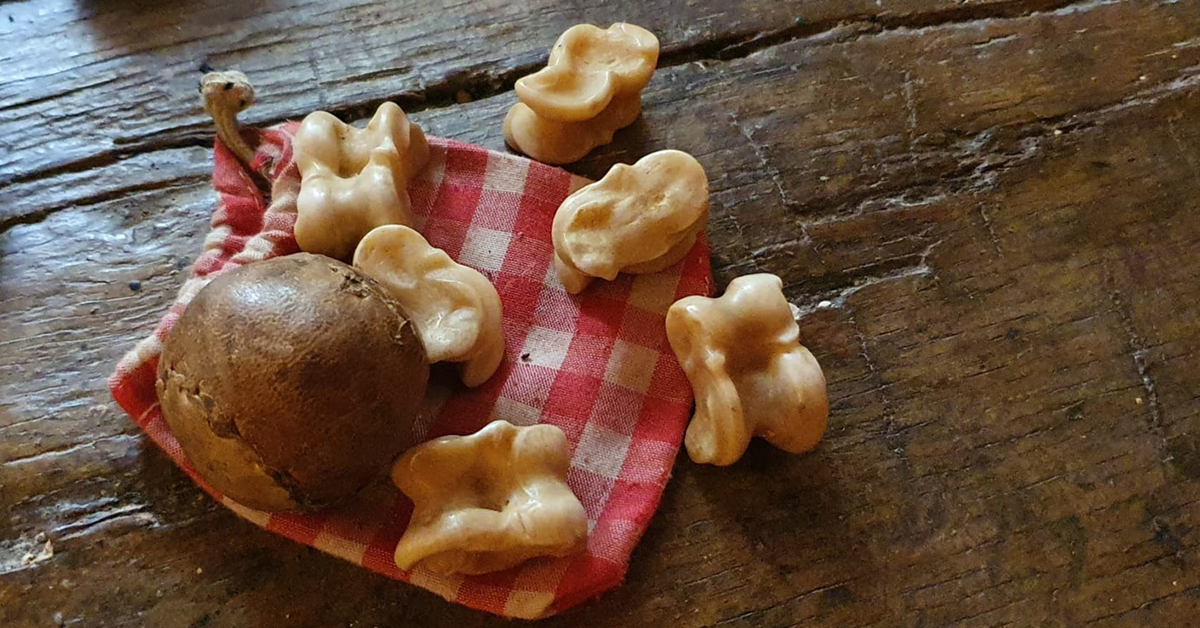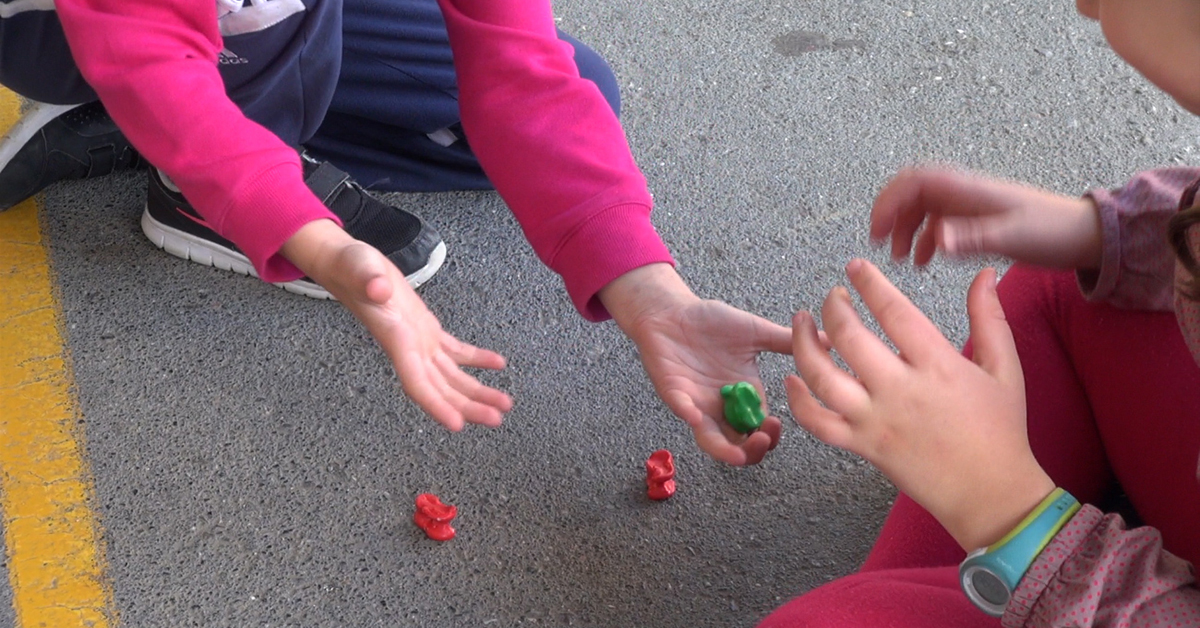Basque ethnography at a glance
“Knucklebones play an important role in European ethnography since prehistoric times”, wrote Telesforo de Aranzadi a century ago. It is indeed one of many traditional children’s games which have been played generation after generation in different parts of the world.
The use of tarsal bones, typically of sheep, has been the usual practice in the Basque Country. Rum and goat knucklebones, much appreciated for being harder and shinier than lamb ones, have also been used. Pig and even cow bones have likewise been said to be saved for playing.
These bones, commonly known as tabak, are given many other different names in Basque: aponak in Markina (Bizkaia), txokoak in Oñati (Gipuzkoa), sakak in Apellániz (Álava) and Ubide (Bizkaia), hazurrak in Lekeitio (Bizkaia), tortolak in Durango (Bizkaia) and environs, tortolosak in Arrasate (Gipuzkoa), kurkuluxak in Andoain (Gipuzkoa), mailak in Baztan (Navarre) and Ezpeleta (Lapurdi)…
Each knucklebone has four sides, two of them wide, two of them narrow. The wider surfaces differ from each other by the concavity which characterizes one of them; its opposite is smooth, free from ridges or projections. The lateral sides are also distinguished by being flatter one and uneven the other. The four positions of a knucklebone are named quite differently from location to location: saca, pon, kuku, carne in Agurain (Álava); lehenengoa, bigarrena, hirugarrena, laugarrena in Galdakao (Bizkaia); cara, culo, hueso, carne in Elo (Navarre)…
Four to twelve astragali are needed to play knucklebones —tabetan, aponetan, txokoka…—, most usually six. The best-known game consists in moving the bones into the required position after tossing up in the air a clay or glass marble, or a small ball, and before they are picked. Once placed in first position and collected, the process is repeated for second, third and fourth positions. The winner is the first player to pick them all up in the four possible positions.
Ziortza Artabe Etxebarria – Popular Cultural Heritage Department – Labayru Fundazioa
Translated by Jaione Bilbao – Ethnography Department – Labayru Fundazioa
(Adapted from Children’s Games, part of the Ethnographic Atlas of the Basque Country collection. See also “Tabas y perinolas en el País Vasco [Knucklebones and spinning tops in the Basque Country]”, by Telesforo de Aranzadi, published in the International Journal on Basque Studies, v. 14, n. 4, 1923.)



